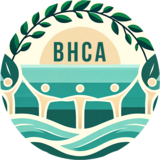Waste Reduction Working Group
A forum to discuss the Council's waste reduction priority.
Waste less, save more, protect the future
DRAFT – March 2024
Vision
A city that sees waste as a resource. A city where residents, businesses, students and visitors adopt reuse, repair, sharing and recycling behaviours that prevent waste, reduce the cost of living, help grow the local circular economy, and preserve our natural resources for future generations.
Objectives
To
- Deliver this communications campaign alongside improvements to the city’s waste management service and waste minimisation project (to reduce contamination and increase recycling rates in the city)
- Improve messaging and education relating to the value of recycling materials, including new materials as they come on stream
- Support households with cost of living by sharing waste prevention advice and raising the profile of low-cost sharing, loaning, repair and reuse options
- Further develop and promote a city-wide re-use, repair, repurpose and waste prevention network
- Support Brighton & Hove’s circular economy action plan to gain local and national recognition
Outcomes
Support the city’s residents and communities towards more circular and zero waste lifestyles through
- Increased take up, usage and footfall of reuse, repair, recycling and circular economy outlets and initiatives
- Increased recycling rates measured through household recycling data
- Reduced contamination of recycling measured through household recycling data
- Reduction in household waste measured through tonnage collected
- Household savings tracked through data gathered by reuse, repair and circular economy outlets and initiatives
- Partnering with businesses, schools and other organisations on reuse activities [OPTIONAL - unclear if there will be resources]
Why
Delivers council priority: Focus on minimising waste (Outcome 1: A city to be proud of; Goal: an accessible, clean and sustainable city; Council Plan 2023-2027)
Supports the circular economy route map and action plan and the latest economic strategy.
Reducing waste contributes to the council’s carbon neutral objectives. Harmful environmental impacts of waste include methane production, which affects global warming and air quality.
Focusing efforts on increasing reuse and recycling and reducing contamination can all have a positive impact on the environment.
The 2022/23 recycling rate was 28.3%, (some way from the UK average of 45%) with the remainder of waste sent for recovery at the Energy Recovery Facility.
Residual waste per household (kg)
- 2022/23 552.05
- 2021/22 544.45
- 2020/21 569.51
The average level of contamination within recycling bins across Brighton & Hove between January and July 2023 was 13.55%. When recycling bins are contaminated, it presents a risk that the material may have to be disposed of as refuse, rather than as recycling.
The UK emissions trading scheme (ETS) will incorporate energy from waste and waste incineration from 2028.
The scheme is designed to incentivise decarbonisation of the waste industry, setting a trade cap and introducing fees for each tonne of CO2 released from the Energy Recovery Facility (ERF). The cap will decrease over time causing a rise in the fees and therefore costs to the parties involved in the emissions.
Documentaries such as Blue Planet II have highlighted the devastating effect of plastic waste in the sea and on marine wildlife. It contributes to the biodiversity emergency by creating hazards for wildlife and contaminating their food supply.
Timeframe
One year from [suggest June 2024]
Campaign concepts
Bring it Brighton & Hove
Local version of similar concept in Barnet being used to encourage residents to ditch single use plastics and bring re-usable items with them to pack and refill – water bottles, bags, food containers and coffee cups.
As a concept, has the potential to expand beyond that e.g
- Bring it, borrow it, save it
- Bring it back (potential deposit schemes or repairs)
- Bring it to life (new uses for old things)
- Bring it down (amount of waste)
- Bring it, bank it (save or earn money)
- Bring it home (litter, protect nature & environment)
Re-Made in Brighton & Hove
Twist on the ‘Made in……’ labels found on clothes and other products. Brings to light any group or organisation re-making and re-using products and encouraging others to do so, and businesses/organisations re-using and making new things out of recycled/found materials.
With a graphic identifier, the ‘Re-Made in Brighton & Hove’ label could be used by groups and businesses involved in these activities, including events and exhibitions.
This would have the dual purpose of bringing people together, recognise what they are already doing, and help the public identify where the outlets and opportunities are so they can take part and support.
In time it could form the basis of a circular economy resource such as a ‘Re-Made in B & H’ directory or map, divided into different sectors – food, construction, textiles etc
Additional ‘strapline’ ideas [to describe different types of activities]
- Love your stuff for longer
- Save it, share it, sell it
- Keep it clean, dry and loose (recycling)
- Recycle right
- Check it before you chuck it! (Recycling – contamination)
- Don’t let your good recycling go to waste (recycling – contamination)


